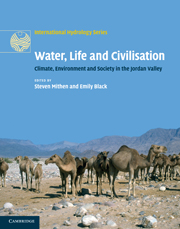38 results
A qualitative study evaluating barriers and enablers to improving antimicrobial use for the management of bacteriuria in hospitalized adults
-
- Journal:
- Antimicrobial Stewardship & Healthcare Epidemiology / Volume 4 / Issue 1 / 2024
- Published online by Cambridge University Press:
- 31 January 2024, e17
-
- Article
-
- You have access
- Open access
- HTML
- Export citation
Evaluating the impact of incorporating clinical practice guidelines for the management of infectious diseases into an electronic application (e-app)
-
- Journal:
- Infection Control & Hospital Epidemiology / Volume 44 / Issue 9 / September 2023
- Published online by Cambridge University Press:
- 03 January 2023, pp. 1417-1422
- Print publication:
- September 2023
-
- Article
-
- You have access
- Open access
- HTML
- Export citation
Effect of multiple micronutrient supplements v. iron and folic acid supplements on neonatal mortality: a reanalysis by iron dose
-
- Journal:
- Public Health Nutrition / Volume 25 / Issue 8 / August 2022
- Published online by Cambridge University Press:
- 25 April 2022, pp. 2317-2321
-
- Article
-
- You have access
- Open access
- HTML
- Export citation
Genetic Variation in the Ontario Neurodegenerative Disease Research Initiative
- Part of
-
- Journal:
- Canadian Journal of Neurological Sciences / Volume 46 / Issue 5 / September 2019
- Published online by Cambridge University Press:
- 15 August 2019, pp. 491-498
-
- Article
-
- You have access
- HTML
- Export citation
Notes on contributors
-
-
- Book:
- Learning Latin and Greek from Antiquity to the Present
- Published online:
- 05 March 2015
- Print publication:
- 26 February 2015, pp viii-xi
-
- Chapter
- Export citation
Preventing Tragedy: Balancing Physicians' Ethical Obligations to Patients and the Public
-
- Journal:
- Disaster Medicine and Public Health Preparedness / Volume 1 / Issue S1 / September 2007
- Published online by Cambridge University Press:
- 08 April 2013, pp. S38-S42
-
- Article
- Export citation
Identification, Management, and Clinical Characteristics of Hospitalized Patients with Influenza-Like Illness during the 2009 H1N1 Influenza Pandemic, Cook County, Illinois
-
- Journal:
- Infection Control & Hospital Epidemiology / Volume 32 / Issue 10 / October 2011
- Published online by Cambridge University Press:
- 02 January 2015, pp. 998-1002
- Print publication:
- October 2011
-
- Article
- Export citation

Water, Life and Civilisation
- Climate, Environment and Society in the Jordan Valley
-
- Published online:
- 26 April 2011
- Print publication:
- 21 April 2011
10 - The impacts of climate change on rainfall-runoff in the upper River Jordan: methodology and first projections
- from Part III - Hydrological studies of the Jordan Valley
-
-
- Book:
- Water, Life and Civilisation
- Published online:
- 26 April 2011
- Print publication:
- 21 April 2011, pp 131-146
-
- Chapter
- Export citation
Part VII - Conclusions
-
- Book:
- Water, Life and Civilisation
- Published online:
- 26 April 2011
- Print publication:
- 21 April 2011, pp 467-468
-
- Chapter
- Export citation
Part I - Past, present and future climate
-
- Book:
- Water, Life and Civilisation
- Published online:
- 26 April 2011
- Print publication:
- 21 April 2011, pp 11-12
-
- Chapter
- Export citation
Part VI - Society, economy and water today
-
- Book:
- Water, Life and Civilisation
- Published online:
- 26 April 2011
- Print publication:
- 21 April 2011, pp 401-402
-
- Chapter
- Export citation
Part IV - Human settlement, climate change, hydrology and water management
-
- Book:
- Water, Life and Civilisation
- Published online:
- 26 April 2011
- Print publication:
- 21 April 2011, pp 189-190
-
- Chapter
- Export citation
15 - From global climate change to local impact in Wadi Faynan, southern Jordan: ten millennia of human settlement in its hydrological context
- from Part IV - Human settlement, climate change, hydrology and water management
-
-
- Book:
- Water, Life and Civilisation
- Published online:
- 26 April 2011
- Print publication:
- 21 April 2011, pp 218-244
-
- Chapter
- Export citation
Index
-
- Book:
- Water, Life and Civilisation
- Published online:
- 26 April 2011
- Print publication:
- 21 April 2011, pp 481-490
-
- Chapter
- Export citation
4 - Future climate of the Middle East
- from Part I - Past, present and future climate
-
-
- Book:
- Water, Life and Civilisation
- Published online:
- 26 April 2011
- Print publication:
- 21 April 2011, pp 51-62
-
- Chapter
- Export citation
2 - The present-day climate of the Middle East
- from Part I - Past, present and future climate
-
-
- Book:
- Water, Life and Civilisation
- Published online:
- 26 April 2011
- Print publication:
- 21 April 2011, pp 13-24
-
- Chapter
- Export citation
Part V - Palaeoeconomies and developing archaeological methodologies
-
- Book:
- Water, Life and Civilisation
- Published online:
- 26 April 2011
- Print publication:
- 21 April 2011, pp 335-336
-
- Chapter
- Export citation
8 - Using proxy data, historical climate data and climate models to investigate aridification during the Holocene
- from Part II - The palaeoenvironmental record
-
-
- Book:
- Water, Life and Civilisation
- Published online:
- 26 April 2011
- Print publication:
- 21 April 2011, pp 105-112
-
- Chapter
- Export citation
Part III - Hydrological studies of the Jordan Valley
-
- Book:
- Water, Life and Civilisation
- Published online:
- 26 April 2011
- Print publication:
- 21 April 2011, pp 129-130
-
- Chapter
- Export citation



